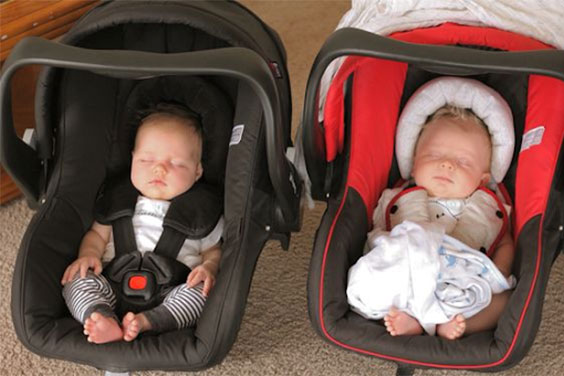If you’re a business-minded person who adores kids’ accessories, then you must have had the idea of starting your own baby product business. Then what stopped you from becoming an entrepreneur? Most usually there are two obstacles in such situations. First is the financial investment that you need or second, the mere thought that you’re not ready for it. The solution to the first obstacle is hidden in the form of loans or partnership deals, although the second obstacle can be a little tacky to handle. For that, you need consultation from an expert. And free consultation is our thing, so get your notepad ready and start taking notes, because we’re about to unleash some of the major steps that you need to act upon for getting yourself a ready-to-act baby product business all set up.
Step by step guide to starting a Baby Product Business:
Follow the 10 steps below to get your baby product business registered, set, planned, and ready to be implemented:
Step 1: Business Plan:
- Before starting a business, it is essential to draft it and measure out the estimated costs that you will be putting on as an investment. Before starting, calculate the pre-conducting expenses of the business such as; the store rental cost, HR hiring expense, merchandise expense, transportation costs, accounts equipment including computers, and safety lock for cash. You should have enough cash ready that could last you at least the first two years of the business, since this period for any business is very shaky.
- Then you have to decide the type of HR you’re going to hire. As a newcomer in this field, we suggest you hire as many interns as needed. Reasons; they cost less, they’re passionate to gain experience, and work diligently since the experience letter provided by you will be the deciding factor of their upcoming jobs.
- Then plan out the profit and loss that you can make in the first few months and since it is a new business, you should first decide what percentage of your profit will you re-invest in the upcoming months. Remember, you are not supposed to spend all of your profit, but save it for rainy days of your business.
- The last part is the name, that you have to come up with. Make it sound unique and something that relates to your niche i.e. baby product. You can take help from the web but make sure that your name is something that sounds professional and new, plus says “Baby”.
Step 2: Registration of LLC:
LLC means a Limited Liability Company and it is a business structure permitted by the state. It means getting registered. There are different legal formalities for each type of business, however, starting a business as a sole proprietor is the easiest as there are no complications of contracts between parties. LLC is essential since it will refrain you from bearing personal loss if your business is sued or goes bankrupt. For these matters, it is better that you either hire a lawyer or get help from a corporate law agency.
Step 3: Tax Registration:
Owning a business means paying business taxes to the federal government. Therefore, you need to get yourself registered for it beforehand. These matters won’t be your headache (apart from signing contracts and making payments) since your legal advisor or corporate lawyer will handle them. This registration process will complete in a week or so and you will be an officially registered business. Once it is done, you will receive your Employee Identification No. by the government.
Step 4: Bank Formalities:
An entrepreneur must have a separate bank account and credit card for the business firm. If you keep your personal assets and money deposited in your business account, there is a huge risk of losing them or getting them out of your hands in form of business assets. This way your accounting will be clear and tax filing will also be a lot easier.
As for credit cards, you should go for the standard ‘Net-30’ term. It means that your firm will pay its credit to the vendors within 30 days of receiving products or services.
Step 5: Business Accounts:
Your business accounts although managed by the accountant, should always be supervised by you. Maintaining your business account by keeping a record of transactions, incomes, and expenditures is the way to keep things simplified for future legal formalities such as tax filing, etc.
Step 6: Permits and License:
It is necessary that acquire the mandatory documents, permits, and licenses that will save your business from future complications and controversies. You will most probably e required to obtain a State and Local Business License and Certificate of Occupancy for operating a baby store and showing possession of the site of your baby store (if you’ve purchased the store, not for the rented site).
Step 7: Business Insurance:
The next step is getting your business insured. Insurance will keep your business safe from catastrophes and other types of losses. It will prove to be a backup in case you face a big loss that was not due to your negligence. We suggest that you get your business insured with General Liability Insurance since it is the best choice for start-up businesses.
Step 8: Brand Definition:
Now to set up your brand identity. You have to create a face of your brand and that represents it in the market. For that, you should hire a graphi8c designer to create the logo and initials of the brand. Then you should start promoting it online by creating its social media page. Hire a social media manager to create the image online and reach the new parents or parents to be through this platform. It will act as a promoting platfo0rm for your new brand.
Pro Tip: Make sure that your manager focuses on speaking more about your brand’s goal (ie providing quality) rather than the products.
Step 9: Business Website:
When you have a social media existence, the clients or parents would want to approach you. For that, you need to have a website that speaks about you from the very basic. Hire a web developer who creates an aesthetic website for your brand that has a pastel color palette (no bright colors). Put up images and descriptions of your baby products along with lenient exchange/return policies. This will help encourage customers to visit the store and buy the products.
Step 10: Business Call System:
Last up is getting a call center ready that is dedicated only to the business. Hire a call attendee who picks up calls and answers the millions of queries asked by the customers. Being active on the phone will help you gain more customers since people want to be sure about the products they’re choosing for their babies.






